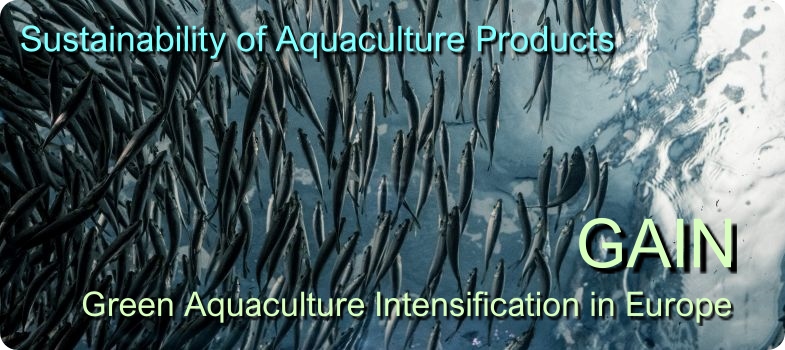Credits and acknowledgements
Authorship
The "What is Sustainability?" Topic was
written by Dr Richard Newton, Dr Sonia Rey Planellas and Professor David Little at the Institute of Aquaculture, Unviersity of Stirling, UK.
Video
The video "Introduction to Sustainability" was produced by Richard Newton. It is licensed under Creative Commons 4.0 cc-by-nc-sa.
The video "Hotfish Podcast: Global Seafood Trade" was produced by Wesley Malcorps and is made availble through the standard YouTube License.
The video "Global Warming 101" was produced by National Geographic and is made availble through the standard YouTube License.
The video "We need IMMEDIATE action to stop extinction crisis" was produced by the BBC and features David Attenborough. It is made availble through the standard YouTube License.
The video "The ocean and us" is a BBC Earth Production prepared for the United Nations Ocean Conference, 5-9th June, 2017 in New York. It is made availble through the standard YouTube License.
The video "What is carbon trading?" was produced by CNBC International. It is made availble through the standard YouTube License.
The video "Can you really pay off your carbon footprint? - Climate Change Explained" was produced by Channel 4 News (UK). It is made availble through the standard YouTube License.
The video "Introduction to socio-economic impacts" was produced by David Little. It is licensed under Creative Commons 4.0 cc-by-nc-sa.
The video "What is Animal Welfare" ws produced by Compassion in World Farming and is made available through the standard YouTube License.
Figures
Figure 1. United
Nations Sustainable Development Goals.
This was taken from https://www.un.org/sustainabledevelopment/news/communications-material/. The conditions for use can be found in the document- https://www.un.org/sustainabledevelopment/wp-content/uploads/2019/01/SDG_Guidelines_AUG_2019_Final.pdf
Figure 2. Conceptual framework of food systems. This is reproduced from HLPE. 2017. Nutrition and food systems. A report by the High Level Panel of Experts on Food Security and
Nutrition of the Committee on World Food Security, Rome. Copyright FAO.
Figure 3. Regional climate change impacts in Europe. Source:EC COM(2018) 773 Final. A Clean Planet for all. A European strategic long-term vision for a prosperous, modern, competitive and climate neutral economy. It is licensed under Creative Commons 4.0 cc-by, See https://wikis.ec.europa.eu/display/WEBGUIDE/03.+Legal+notice+and+copyright
Figure 4. Sustainability must also address social development issues. Photo of young students in a primary school classroom in Kenya. It was taken by Masakazu Shibata, UNESCO and is licensed under Creative Commons 2.0 by-nc-sa
Figure 5. Thresher shark fins inside a nylon bag discovered by Hong Kong authorities. Image by HK Customs, from Mongabay article by Elizabeth Claire Alberts. It is licenced cc by-nd
Figure 6. Warming
projections to 2100. Diagram from "The Climate Tracker" by Climate Analytics and NewClimate Institute. Copyright
© 2009-2021 by Climate Analytics and NewClimate Institute. All rights reserved. Reproduction, in full or
in part, must credit Climate Analytics and NewClimate Institute and must
include a copyright notice and must not be used for commercial purposes. Source: https://climateactiontracker.org/press/global-update-projected-warming-from-paris-pledges-drops-to-two-point-four-degrees/
Figure 8. Overfishing
in the Atlantic. This
chart shows the share of total allowable catch (TAC) in excess of scientific
advice in 2019. The chart is taken from Statista (article by Martin Armstrong) based on a report by The Economics Foundation. The figure is licensed under Creative Commons 4.0 cc-by-nd. see copyright conditions of Statista.
Figure 9. Acidification impact on gastropod shells. This photograph is reproduced from an article by Carol Smith "Climate Change's 'Evil Twin': Ocean Acidification" published by the United Nations University and licensed under Creative Commons 3.0 BY-NC-SA. The photograph credit is the Arctic Monitoring and Assessment Programme; a working group of the Arctic Council.
Figure 10. Satellite image of Crimea showing eutrophic Sea of Azov. Provided by the SeaWiFS Project, NASA/Goddard Space Flight Center, and ORBIMAGE based on data acquired on 13 April 2000. Source: NASA Visible Earth. Reproduced under the terms of NASA image use.
Figure 11. Estimated
change of habitat range sizes of the world’s mammals, birds, and amphibians
between 1700 and 2016, relative to potential natural ranges in 1850. Coloured
areas represent 10% (red), 20% (orange), through to 90% (blue) of range changes
across 16,919 species. The black line shows the across-species median. This chart is reproduced from Beyer, R.M., Manica, A. Historical and projected
future range sizes of the world’s mammals, birds, and amphibians. Nat Commun 11, 5633 (2020). https://doi.org/10.1038/s41467-020-19455-9. It is licensed under Creative Commons 4.0 cc-by.
Figure 12. A broadly linear relationship can be seen between individual meat consumption and national wealth (GDP). Source. Our World in Data It is licensed under Creative Commons 4.0 cc-by.
Figure 13. Comparison in per capita meat consumption between developed and developing countries. Infographic taken from Tostado, L. 2021. Consumption: everyday food and luxury good. Blog Artitle published by Heinrich Boll Stiftung, Brussels. Image by Bartz/Stockmar. It is licensed under Creative Commons 4.0 cc-by.
Figure 14. Meat consumption in relation to national GDP. Infographic taken from Tostado, L. 2021. Consumption: everyday food and luxury good. Blog Artitle published by Heinrich Boll Stiftung, Brussels. Image by Bartz/Stockmar. It is licensed under Creative Commons 4.0 cc-by.
Figure 15. Cost of the EAT-Lancet reference diet in 2011 international dollars by country income levels and major regions. The figure is taken from: Hirvonen, K., Bai, Y., Headey, D., Masters, W.A., 2020. Affordability of the EAT – Lancet reference diet : a global analysis. Lancet Glob. Heal. 8, e59–e66. https://doi.org/10.1016/S2214-109X(19)30447-4 It is licensed under Creative Commons 4.0 cc-by.
